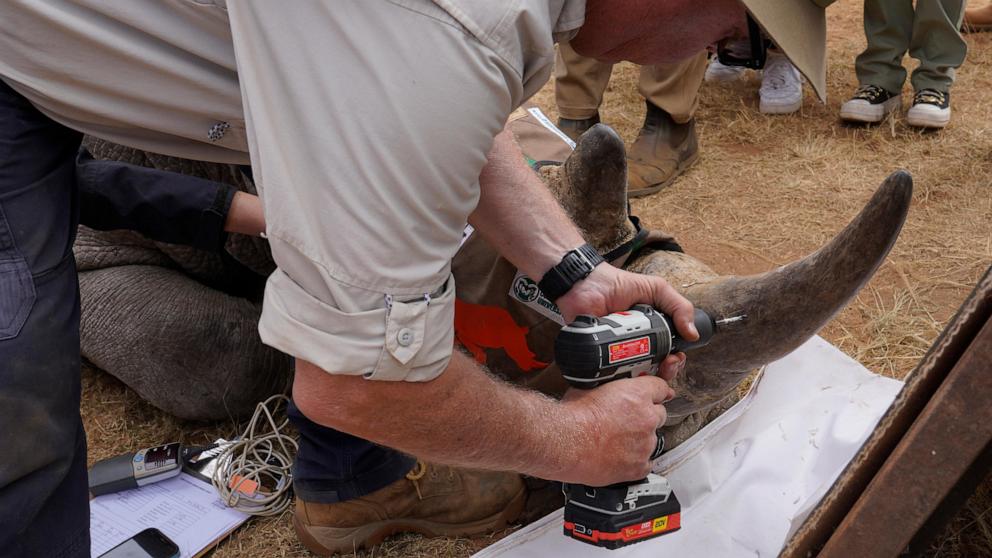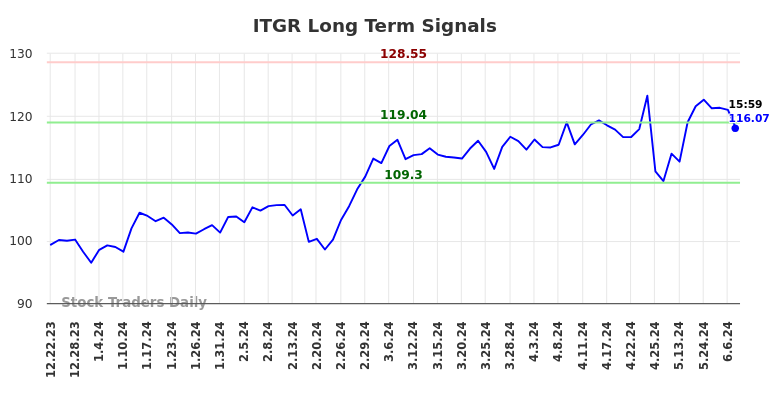Researchers in South Africa have injected radioactive material into the horns of 20 rhinos as part of a research project to curb poaching.
MOKOPANE, South Africa – As part of a research project to curb poaching, researchers in South Africa have injected 20 rhinos with radioactive material.
The idea is that the radiation detectors already installed at the country’s borders could detect the horns and help the authorities arrest poachers and smugglers.
The research, which also involved veterinarians and nuclear experts, begins by anesthetizing the animal before a hole is drilled in its horn and the nuclear material is carefully inserted. This week, researchers from the Department of Radiation and Health Physics at the University of the Witwatersrand in South Africa injected 20 live rhinos with these isotopes. They hope the procedure can be reproduced to save other wild species vulnerable to poaching – such as elephants and pangolins.
“We’re doing this because it will make it much easier to intercept these horns when they’re smuggled across international borders, because there’s a global network of radiation monitors designed to prevent nuclear terrorism,” said Professor James Larkin, the project’s leader. “And we’re building on that network.”
According to the International Union for Conservation of Nature, an international conservation organization, the global rhino population was about 500,000 animals at the beginning of the 20th century. Due to the continued demand for rhino horns on the black market, it is now around 27,000 animals.
South Africa has the largest rhino population with an estimated 16,000 animals and is a hotspot with over 500 rhinos killed each year.
The country saw a significant decline in rhino poaching around 2020, at the height of the COVID-19 pandemic, but numbers began to rise again as virus lockdown restrictions were eased.
“We need to do something new and different to curb poaching. You’ll see that the numbers have already started to rise,” Larkin said. “During Covid they all went down, but after Covid we’re now seeing those numbers go up again.”
Although the idea met with some approval in the industry, the researchers had to overcome numerous ethical hurdles put in their way by critics of their methodology.
Pelham Jones, chairman of the Private Rhino Owners Association, is among the critics of the proposed method and doubts that it would effectively deter poachers and human traffickers.
“(Poachers) have found other ways to move rhino horn out of the country, off the continent or off the continent than through traditional border crossings,” he said. “They are bypassing border crossings because they know that is where the greatest risk of confiscation or interception lies.”
Professor Nithaya Chetty, dean of the Faculty of Science in Witwatersrand, said the dose of radioactivity was very low and its possible negative effects on the animal had been extensively tested.




